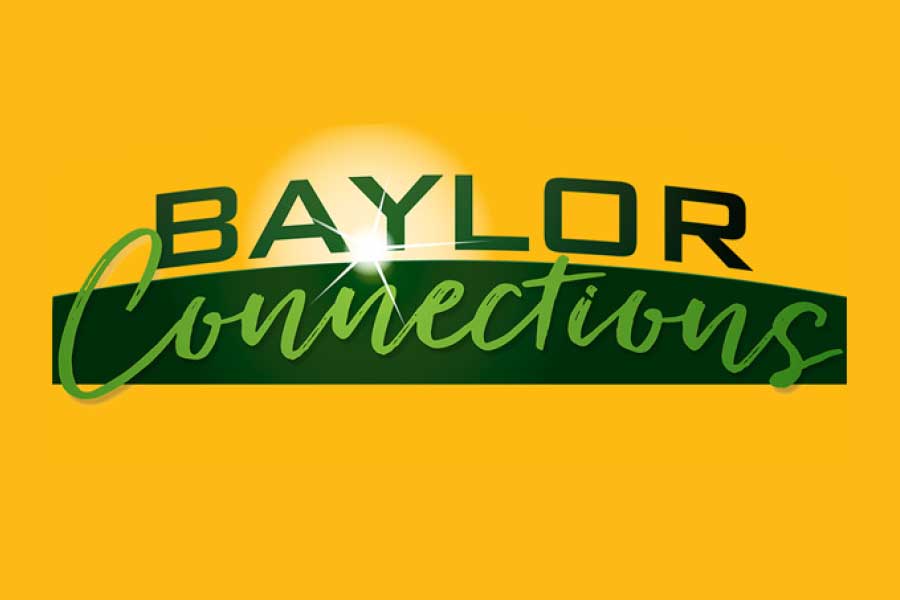Baylor Connections
From her early career days in the entertainment industry, Dr. Tyrha Lindsey-Warren, clinical assistant professor of marketing in Baylor’s Hankamer School of Business, learned the impact of storytelling. Experiences at NBC, the Academy of Television Arts and Sciences, Creative Artists Agency and Quincy Jones-David Salzman Entertainment shaped her insights when she made a career pivot to business and marketing.
Today, Baylor students benefit from her insights and research in film, advertising and entertainment, narrative transportation theory, multicultural media, and storytelling and consumer behavior. On an episode of Baylor Connections, a weekly radio show and podcast highlighting University people and programs, Lindsey-Warren discussed the ways businesses can bridge information and entertainment to reach increasingly distracted audiences.
What are the challenges and opportunities that you are motivated to address through your work?
Through work with different clients as a marketing practitioner, I used a term I call “edutainment” as a strategy to positively connect with stakeholders. If you have to inform a client, you want to entertain as well as educate them. That can be a powerful combination to help get a challenging subject matter digested through media. The same holds true for consumers. If we are teaching them about the importance of clinical trials, who really wants to talk about that? However, if it’s packaged with an entertainment and education combination, it lands better.
That was the question that started me on my doctoral journey: Why is edutainment so impactful? That led me to narrative transportation, which is actually the process of consumers being absorbed in the telling of the story. When you look at that process, what are some of the salient components of that process? You have relatable characters, conceivable plot lines and then this wonderful aspect of verisimilitude, found in realism, truth and authenticity. It’s a process that involves the consumer in mind, body and spirit. Once I realized that power, I got excited to research it more and came up with the construct of empowered storytelling.
What is empowered storytelling?
Empowered storytelling exudes the emotion of empowerment. Oftentimes, we see storytelling that is aspirational. Fashion does that a lot. Beauty does that a lot. That’s what we are trying to do in many different types of subject matters — to empower our audiences.
I define empowerment in my research as a multilayered emotion that creates optimism in our power, confidence and an inherent call to action. It encourages positive and transformative behavior in consumers. When you combine all of that with the power of storytelling, with those salient characteristics and components of relatable characters, conceivable plots and that aspect of verisimilitude, that’s a powerful punch that enables brands to connect with consumers in a meaningful way.
How do current students relate to these concepts, and what trends do you see in advertising?
In the context of advertising that I teach to my Baylor students, primarily seniors just before they graduate and go off into the workplace, empowered storytelling is not a difficult concept for them. They are essentially seeing it every day. My students, who are primarily Gen Z, are accustomed to this type of storytelling because brands want to connect with them, and they have been learning. I have also found, in my research, that the students don’t want to be promoted to by way of a direct sales message. They want to see the values, the belief system and more being communicated, connecting to them in a real way. That’s the aspect of verisimilitude.
A trend that we’re definitely seeing is a focus toward women, which makes sense because statistics show that women hold 60 percent of the personal wealth in the U.S. and purchase more than 50 percent of the traditional male products like automobiles, home improvement products and consumer electronics. It makes good business sense to put effort into reaching and better connecting with the woman consumer. It’s wonderful to slowly see businesses, like the National Football League, for example, make the effort to connect authentically.
We also see more trends toward a new word of mouth, if you will. When we talk about integrated marketing communications in my classes and how to develop an integrated marketing communications campaign in today’s marketplace, word of mouth is something you’ve got to galvanize. You do that not only through traditional media, but on digital advertising — perhaps more so digitally. Digital is the new word of mouth. Ten or 20 years ago, we looked to our friends, family, community leaders, pastors, barbers or beauticians to tell us, for instance, about a good movie or product. Now, those influencers are online. For brands, being able to galvanize word of mouth on digital is another trend. And to me, empowered storytelling is that strategic tool that can help brands galvanize that new word of mouth.
To hear the complete conversation with Lindsey-Warren and to find links to each Baylor Connections episode, visit baylor.edu/connections
For more on Lindsey-Warren, read The Greatest Story Ever Sold, from the Baylor Business Review.
